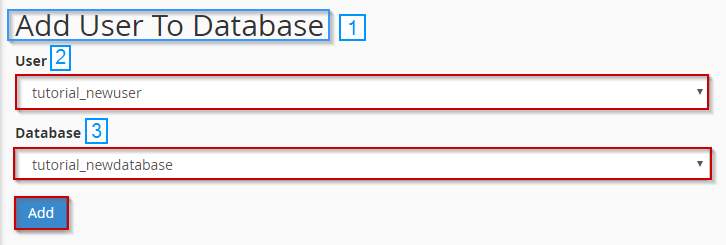Hostwinds Tutorials
Search results for:
Table of Contents
How do I Create Permissions for MySQL Databases?
How do I modify a user's permissions in a MySQL Database?
How do I review current users, change their passwords, or delete them?
Managing MySQL User Permissions in cPanel
How do I Create Permissions for MySQL Databases?
How do I modify a user's permissions in a MySQL Database?
How do I review current users, change their passwords, or delete them?
There are times when a database user does not need to have full permissions to a database to interact with a MySQL Database. If you ever need to create a user with restricted permissions, this guide will help you do just that.
How do I Create Permissions for MySQL Databases?
MySQL users can be set up with certain permissions to regulate their access. What users are allowed to do include SELECT, INSERT, UPDATE and DELETE. This guide will show you, the administrator, how to set or revoke those privileges through your cPanel account.
To get started, you will want to go to: Home > Databases > MySQL Databases as shown in this image:

- Scroll down to the Add User to Database section
- From the first dropdown box, select the User
- From the second dropdown box, select the database
- Click the Add button

- Choose the permissions you want the user to have, or select All Privileges if you want to give them all.
- Click the Make Changes button.

How do I modify a user's permissions in a MySQL Database?
- If you want to modify the permissions you provided a user, then head back into the Current Databases section of Databases.
- Click on the username next to the database that you want to update.

- The user permission options will appear in a series of checkboxes, similar to before.
- Check the box you want to update their permissions to, and click the Make Changes button.
How do I review current users, change their passwords, or delete them?
- Towards the bottom of MYSQL Databases is a list of all users created.
- You can manage the user's password, edit their user name, or delete them entirely.

Written by Michael Brower / December 13, 2016
